Relationship between mood change, odour and its physiological effects in humans while inhaling the fragrances of essential oils as well as linalool and its enantiomers
- PMID: 23486108
- PMCID: PMC6270273
- DOI: 10.3390/molecules18033312
Relationship between mood change, odour and its physiological effects in humans while inhaling the fragrances of essential oils as well as linalool and its enantiomers
Abstract
Humans can detect and discriminate a vast number of odours. The number perceived as distinguishable is estimated to be more than ten thousand. Humans are capable of distinguishing even slight alterations in the structure of an odorous molecule. A pair of enantiomers of an odorant, which possess the same molecular structures except for the chiral position, can trigger profoundly different odour perceptions. How precisely can humans and their olfactory system detect and discriminate such a great variety of odours and such subtle differences in the molecular structures? In a series of studies, we have attempted to examine the relationship between mood change, odour and its physiological effects, by focusing on the possible verbal and non-verbal changes in humans induced by smelling the fragrances of essential oils as well as linalool and its enantiometric isomers. In this article, we provide an overview of our recent verbal and non-verbal studies. We then discuss how our findings may contribute to the assessment of psychophysiological responses of essential oils as well as how our research can contribute to the study of human chemoreception science, by shedding light on the sophistication of the olfactory system in its ability to detect and discriminate odors.
Figures
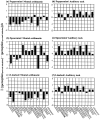
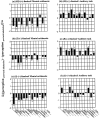
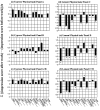
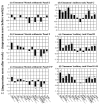
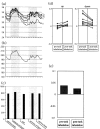

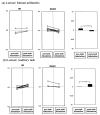
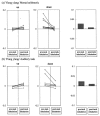


Similar articles
-
Physiological effect of olfactory stimuli inhalation in humans: an overview.Int J Cosmet Sci. 2014 Apr;36(2):117-23. doi: 10.1111/ics.12096. Epub 2014 Jan 7. Int J Cosmet Sci. 2014. PMID: 24117755 Review.
-
Olfactory habituation to food and nonfood odours.Q J Exp Psychol (Hove). 2023 Jun;76(6):1209-1219. doi: 10.1177/17470218221115046. Epub 2022 Aug 8. Q J Exp Psychol (Hove). 2023. PMID: 35866345
-
Olfactory Stimulation with Volatile Aroma Compounds of Basil (Ocimum basilicum L.) Essential Oil and Linalool Ameliorates White Fat Accumulation and Dyslipidemia in Chronically Stressed Rats.Nutrients. 2022 Apr 27;14(9):1822. doi: 10.3390/nu14091822. Nutrients. 2022. PMID: 35565791 Free PMC article.
-
Odours count: human olfactory ecology appears to be helpful in the improvement of the sense of smell.Sci Rep. 2021 Aug 19;11(1):16888. doi: 10.1038/s41598-021-96334-3. Sci Rep. 2021. PMID: 34413403 Free PMC article.
-
Understanding smell--the olfactory stimulus problem.Neurosci Biobehav Rev. 2013 Sep;37(8):1667-79. doi: 10.1016/j.neubiorev.2013.06.009. Epub 2013 Jun 25. Neurosci Biobehav Rev. 2013. PMID: 23806440 Review.
Cited by
-
Linalool as a Therapeutic and Medicinal Tool in Depression Treatment: A Review.Curr Neuropharmacol. 2022;20(6):1073-1092. doi: 10.2174/1570159X19666210920094504. Curr Neuropharmacol. 2022. PMID: 34544345 Free PMC article. Review.
-
Relaxing Effects of Breathing Pseudotsuga menziesii and Lavandula angustifolia Essential Oils on Psychophysiological Status in Older Adults.Int J Environ Res Public Health. 2022 Nov 18;19(22):15251. doi: 10.3390/ijerph192215251. Int J Environ Res Public Health. 2022. PMID: 36429972 Free PMC article.
-
Natural environments, ancestral diets, and microbial ecology: is there a modern "paleo-deficit disorder"? Part II.J Physiol Anthropol. 2015 Mar 10;34(1):9. doi: 10.1186/s40101-014-0040-4. J Physiol Anthropol. 2015. PMID: 25889196 Free PMC article. Review.
-
Influence of Fragrances on Human Psychophysiological Activity: With Special Reference to Human Electroencephalographic Response.Sci Pharm. 2016 Nov 29;84(4):724-751. doi: 10.3390/scipharm84040724. Sci Pharm. 2016. PMID: 27916830 Free PMC article. Review.
-
In Vitro Evaluation of the Antioxidant, Cytoprotective, and Antimicrobial Properties of Essential Oil from Pistacia vera L. Variety Bronte Hull.Int J Mol Sci. 2017 Jun 6;18(6):1212. doi: 10.3390/ijms18061212. Int J Mol Sci. 2017. PMID: 28587291 Free PMC article.
References
-
- Friedman L., Miller J.G. Odor incongruity and chirality. Science. 1971;172:1044–1046. - PubMed
-
- Leitereg T.J., Guadagni D.G., Harris J., Mon T.R., Teranishi R. Chemical and sensory data supporting the difference between the odors of the enantiometric carvones. J. Agric. Food Chem. 1971;19:785–787. doi: 10.1021/jf60176a035. - DOI
-
- Russell G.F., Hills J.I. Odor difference between enantiometric isomers. Science. 1971;172:1043–1044. - PubMed
Publication types
MeSH terms
Substances
LinkOut - more resources
Full Text Sources
Other Literature Sources
Medical

